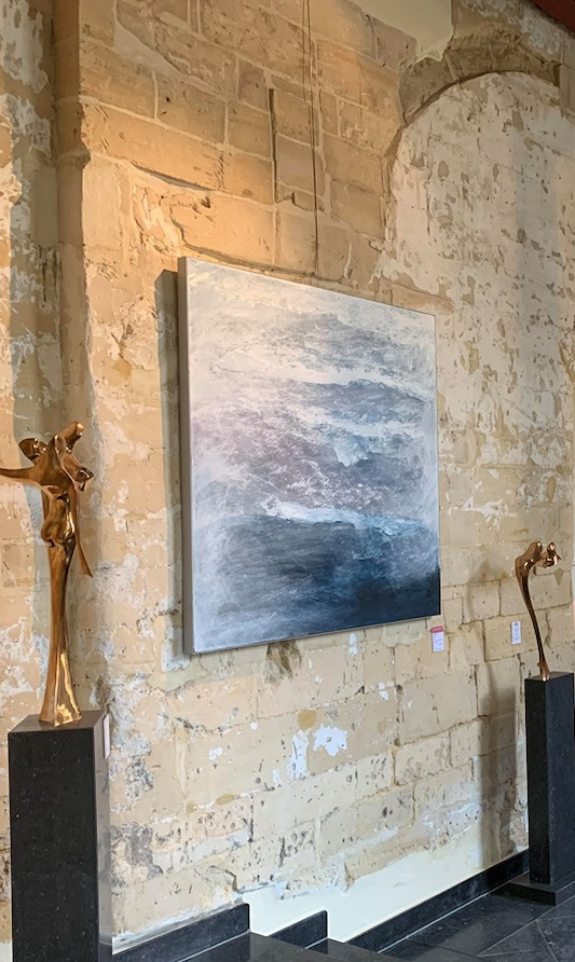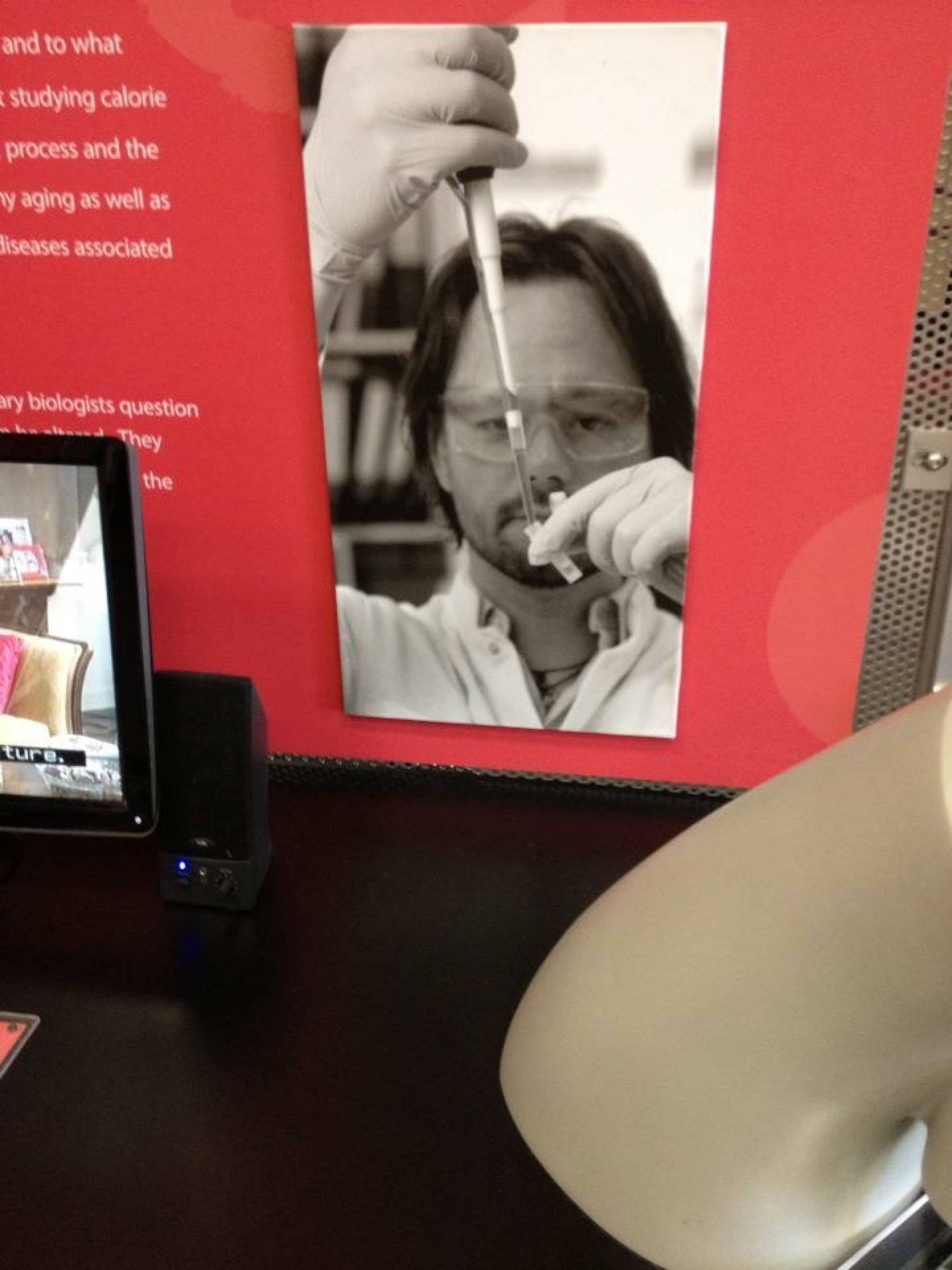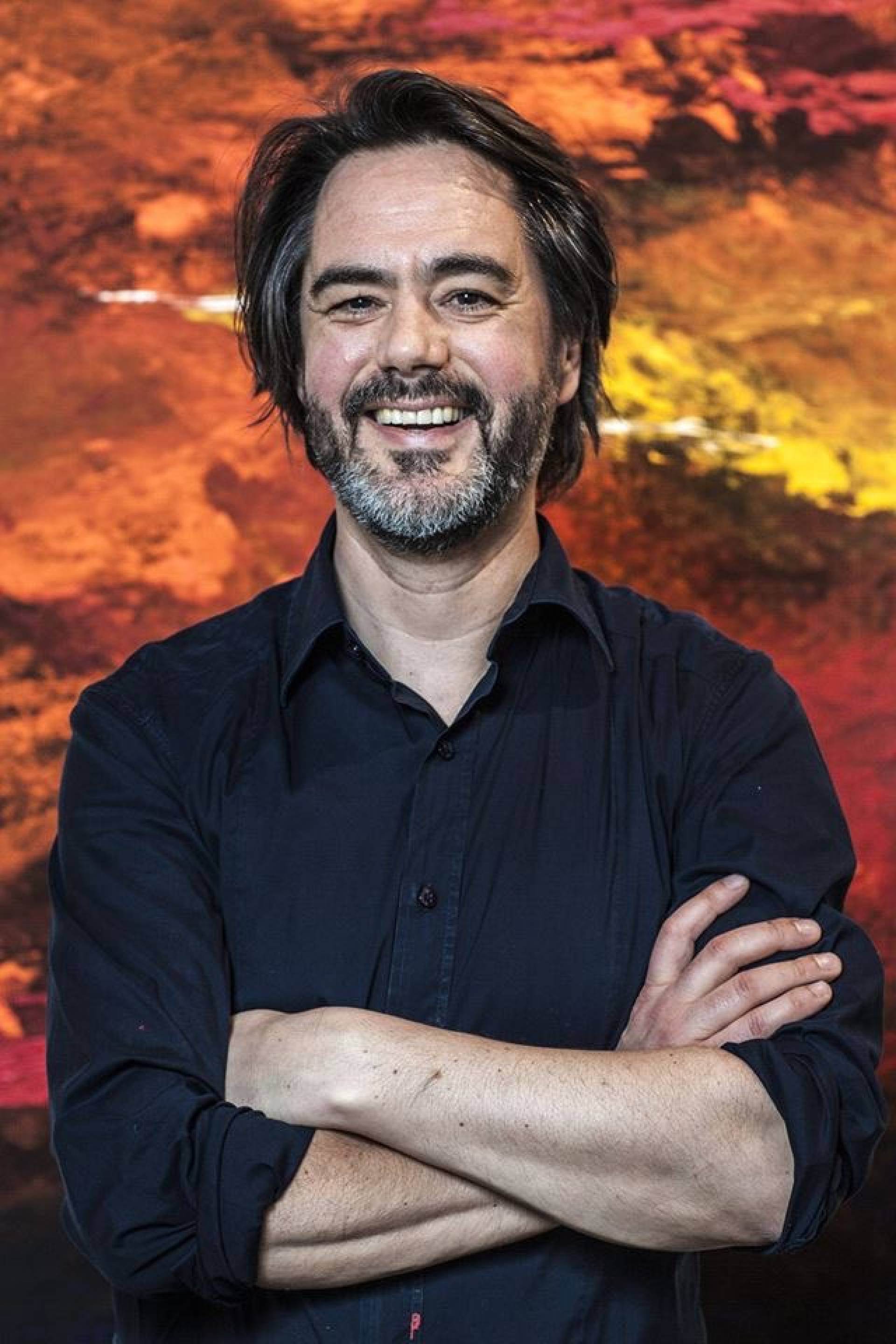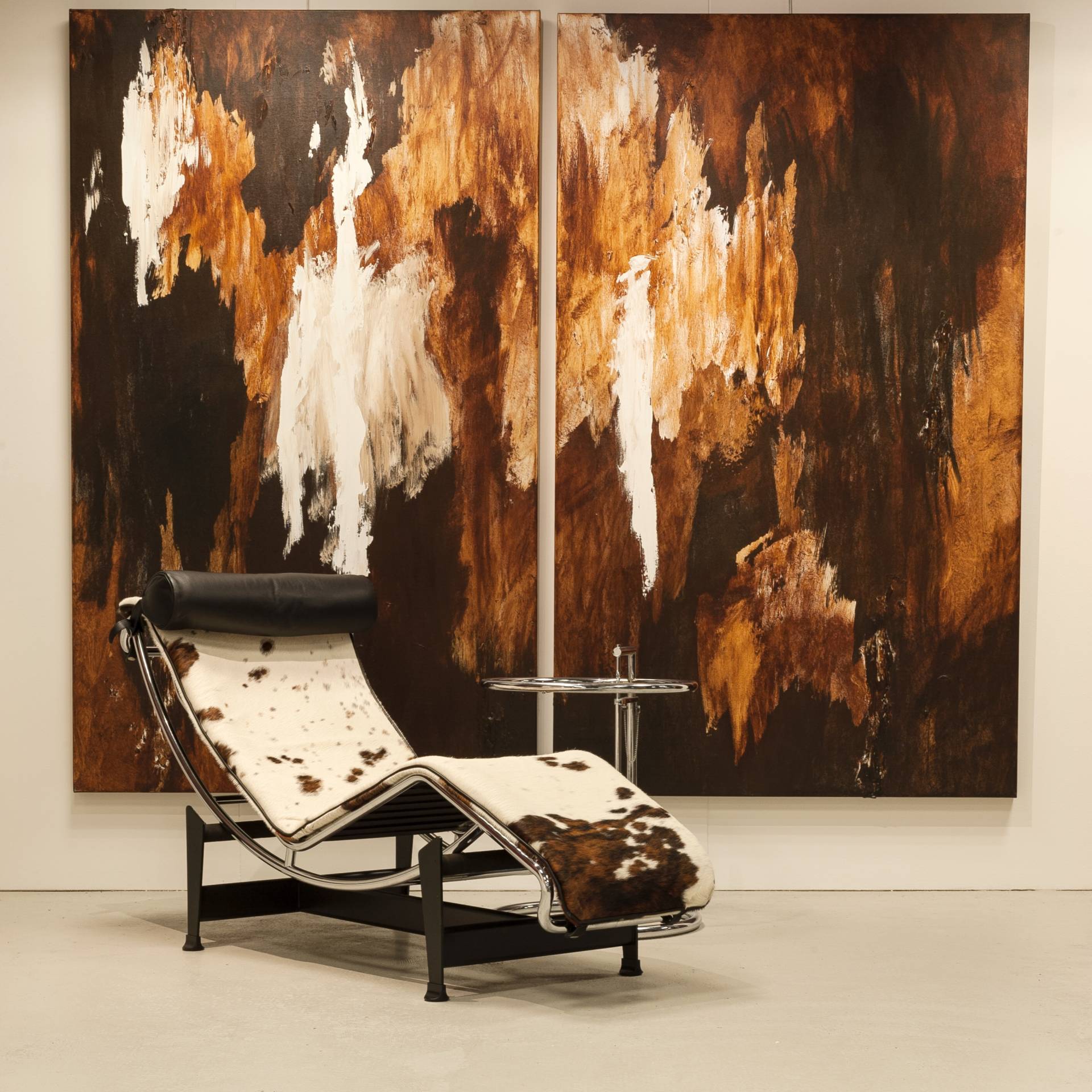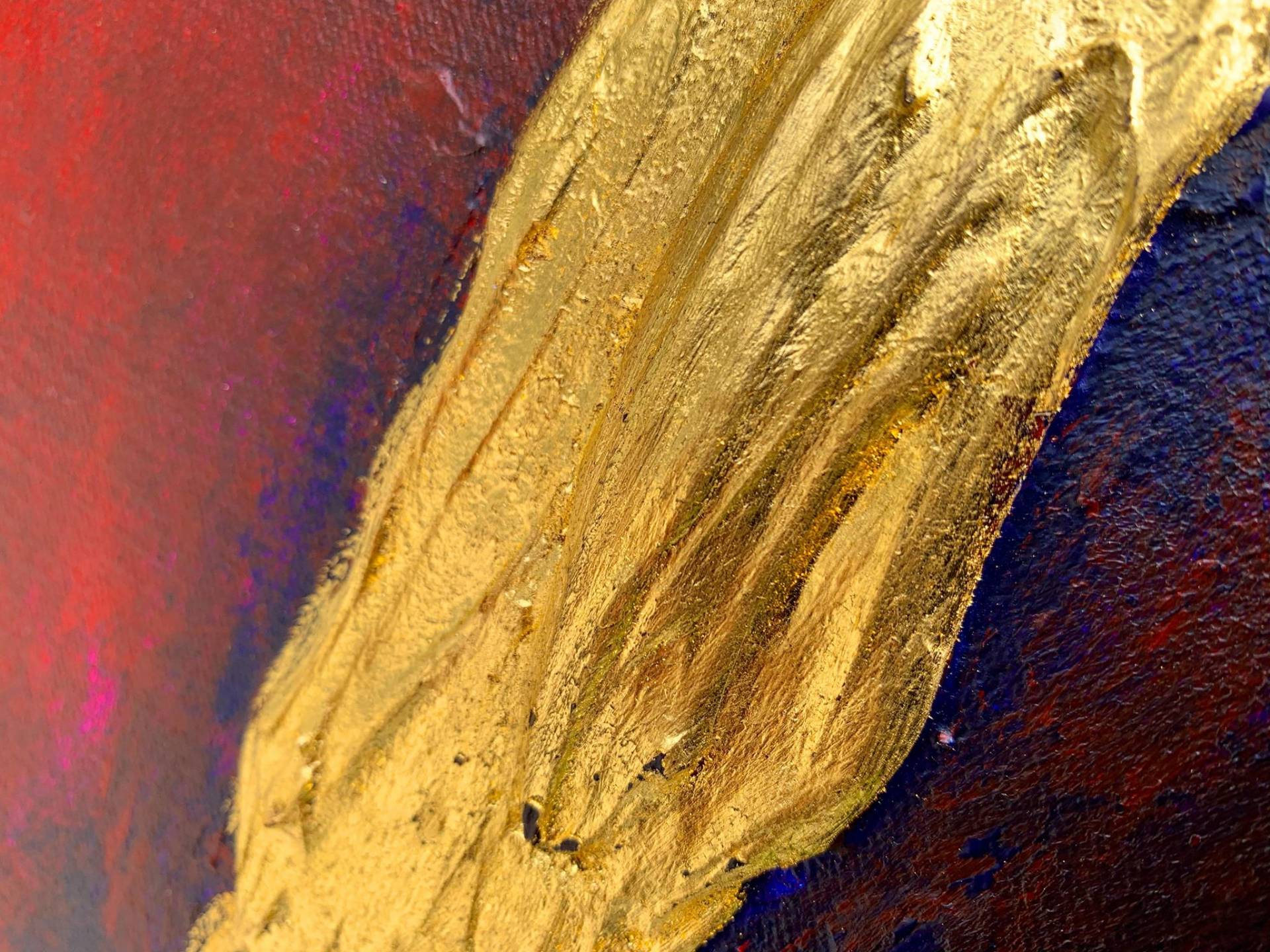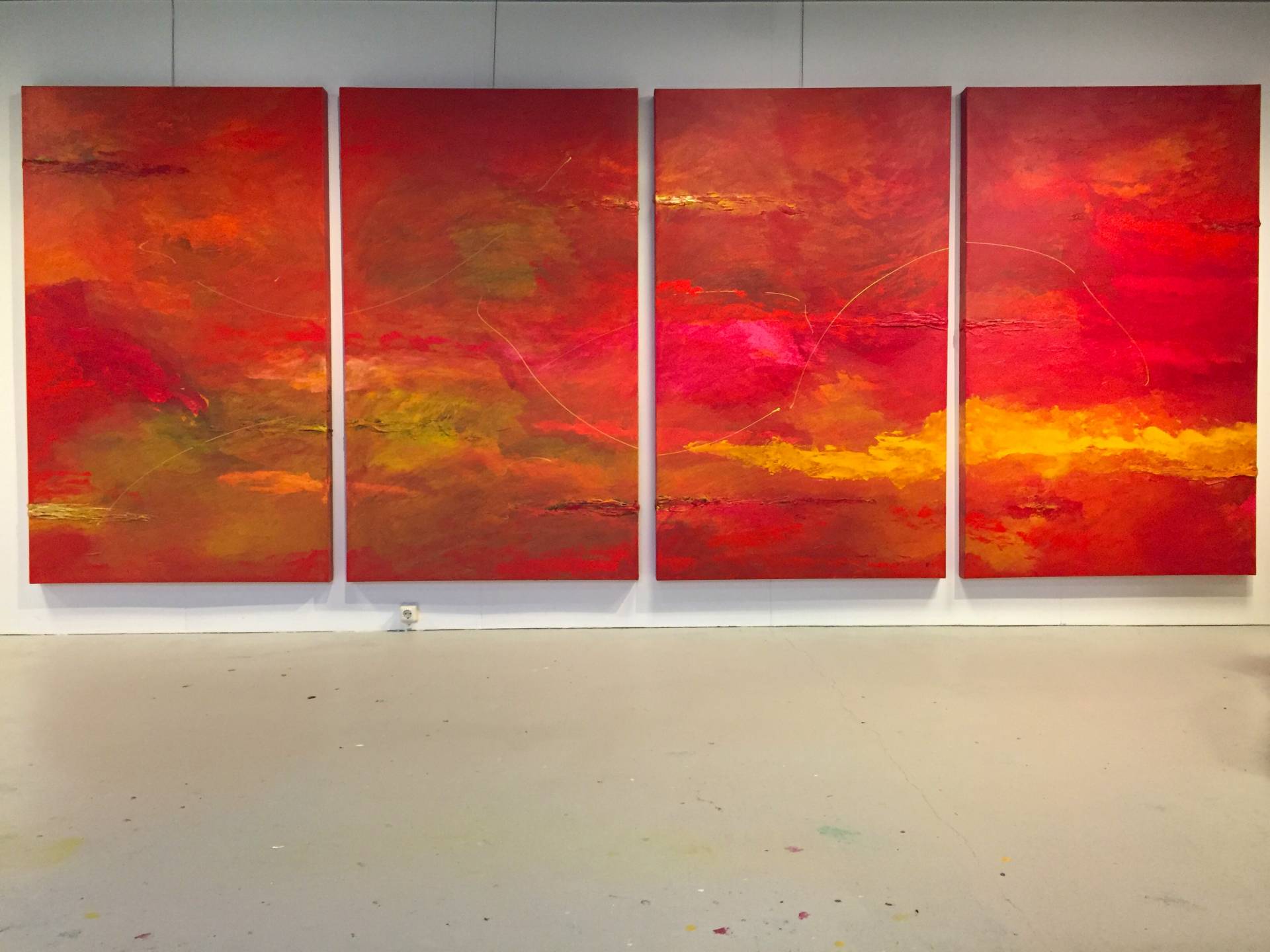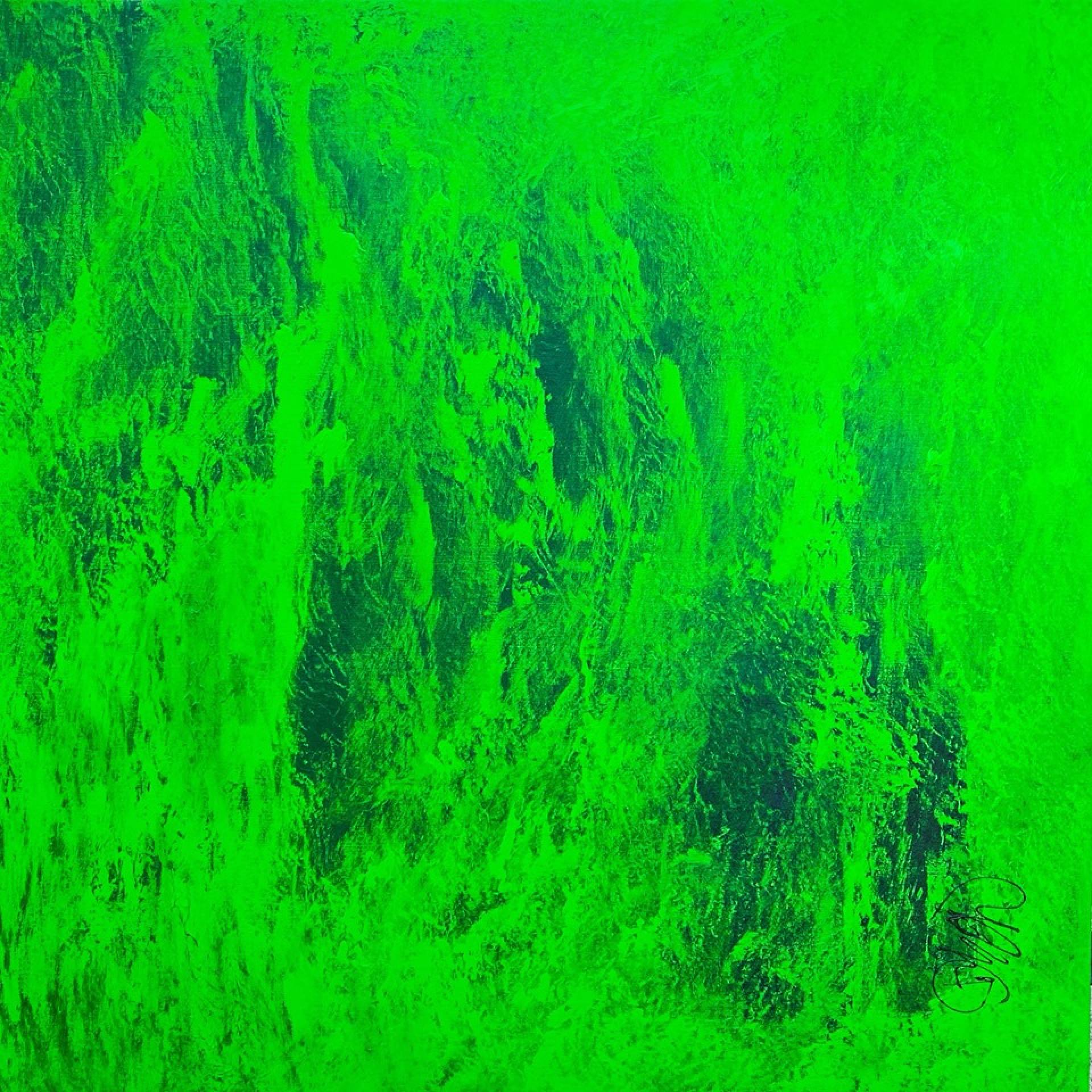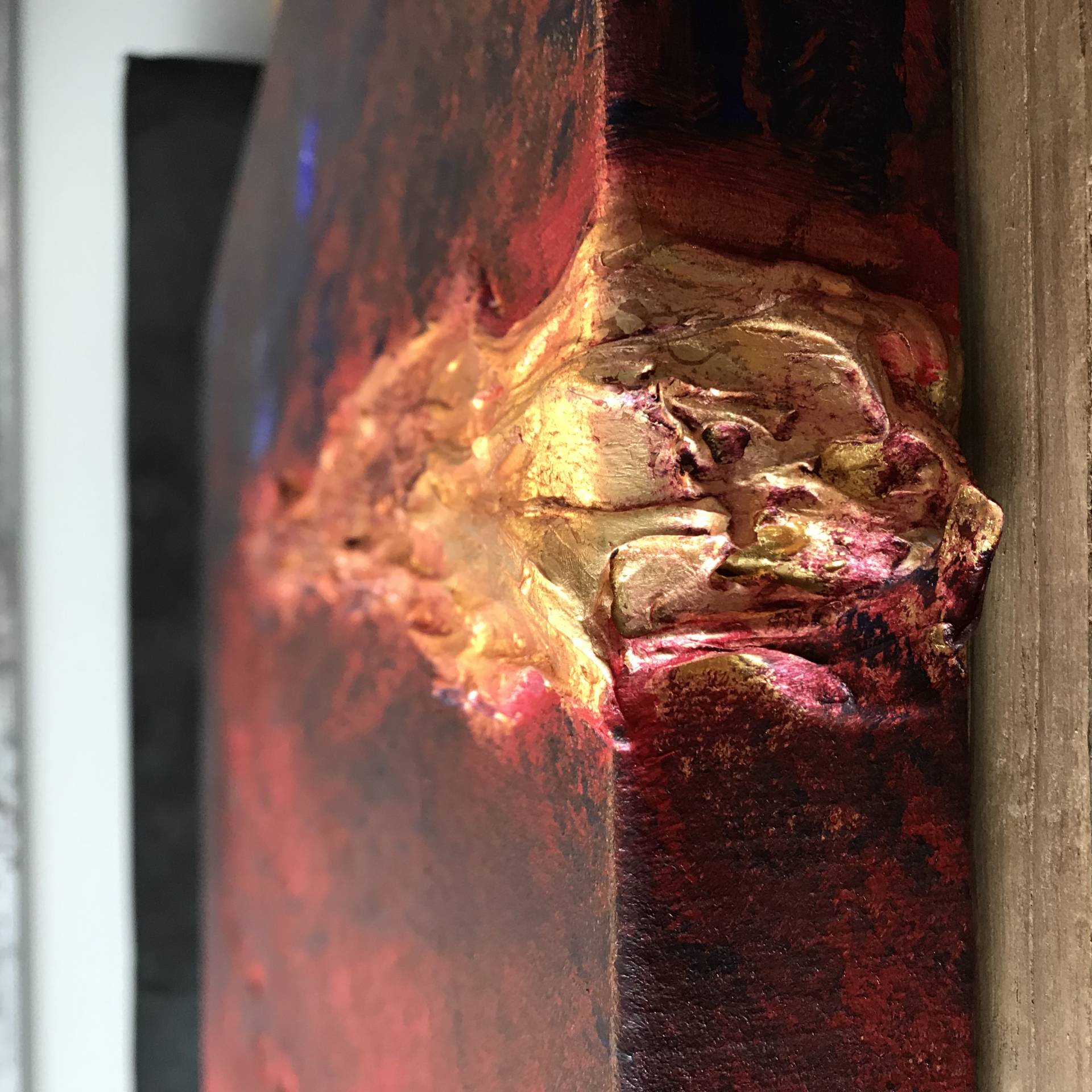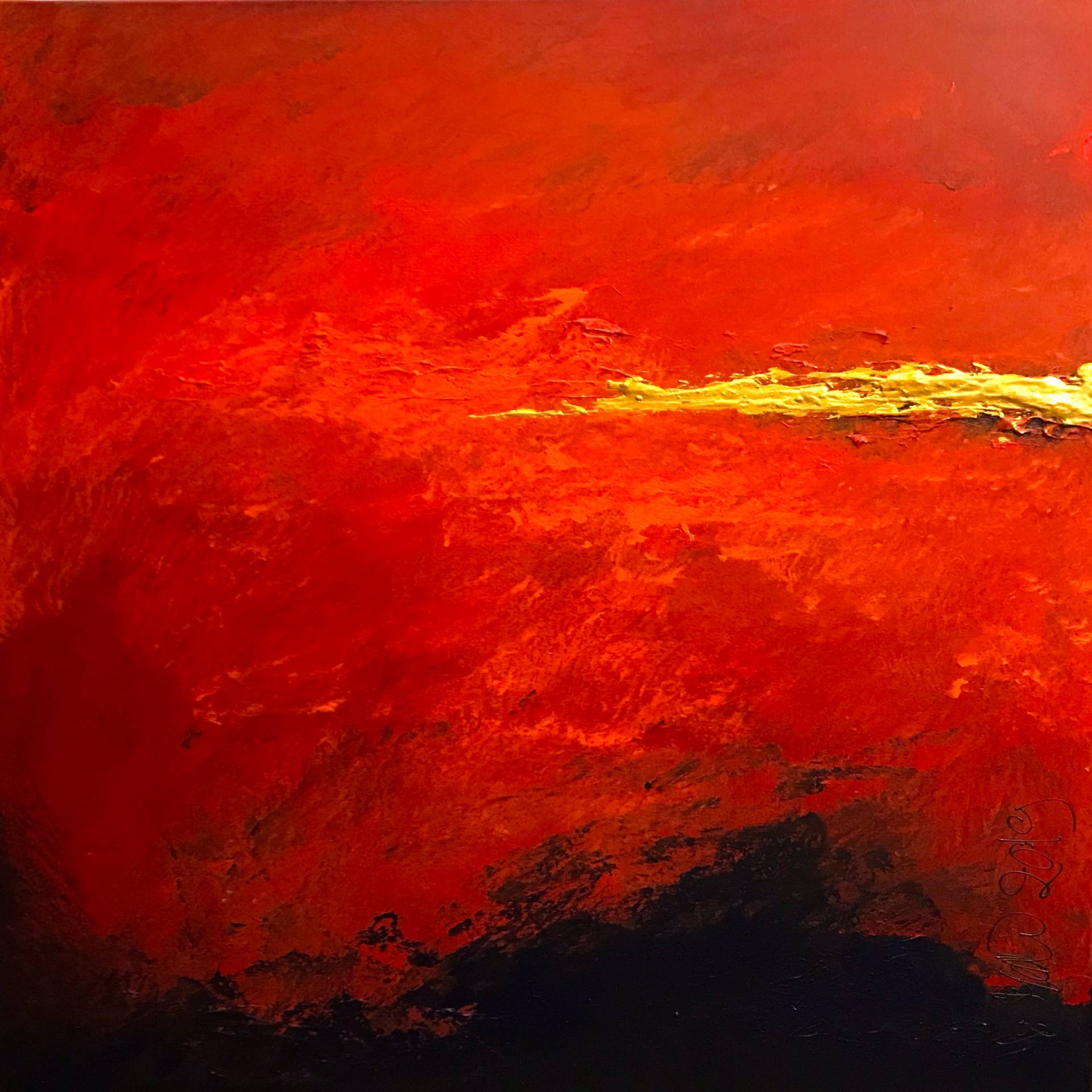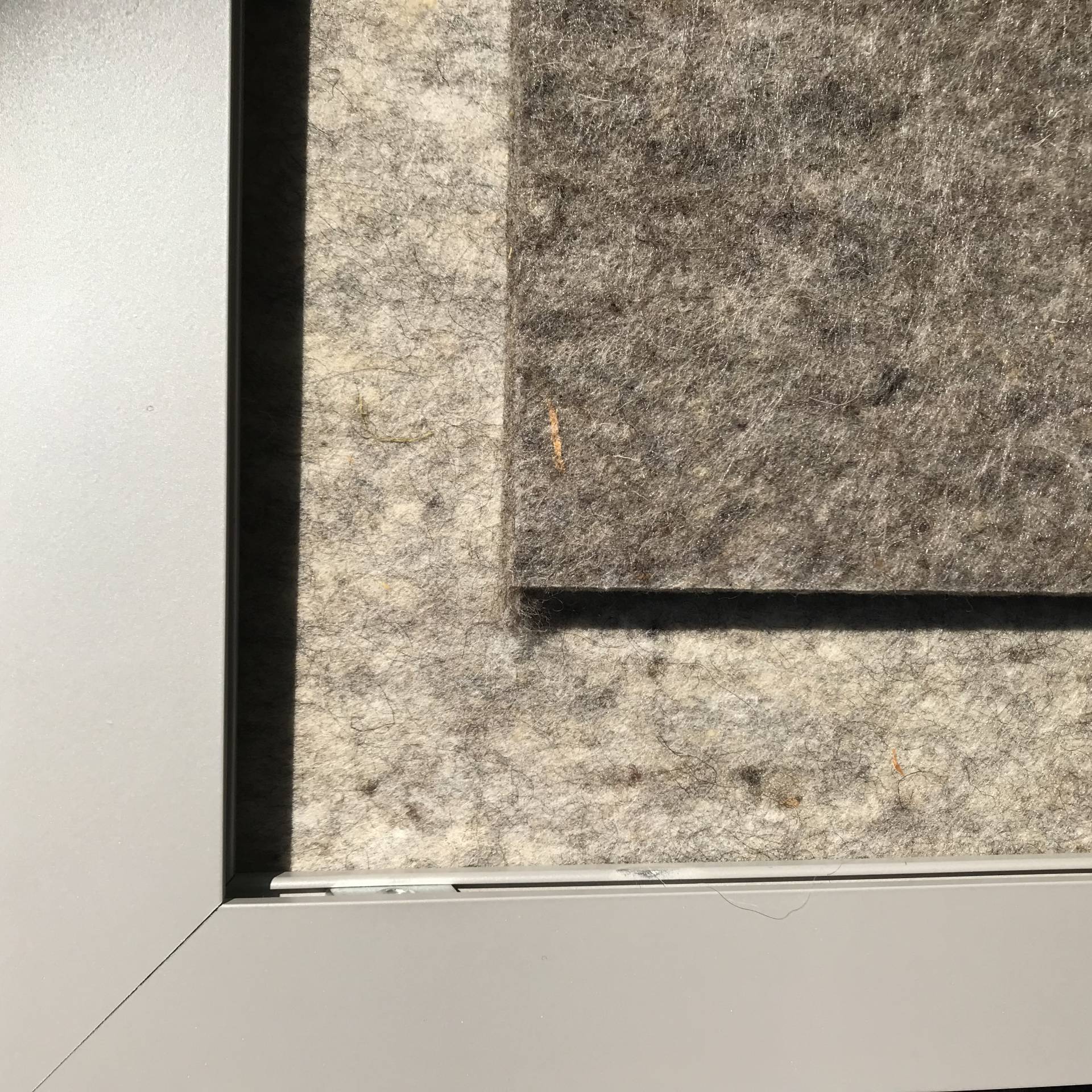
Dyon Scheijen
Dyon Scheijen
Dyon Scheijen is a clinical physicist-audiologist and artist in contemporary art, two professions that flow seamlessly together. Dyon paints large works in warm colors such as red, gold and earth tones, in which harmony plays a major role. By painting his works on specially tailored acoustic panels, he draws attention to the acoustics in a room, which can make a big difference for people with hearing loss. This is where his passion for art and for his work as a medical specialist come together.
Dyon Scheijen:
I think it is very healthy to look back in life in which you have enjoyed the job you did. Not because it is your job, but because it has given you lots of energy and joy. That is so important. During my consultation hour as an audiologist, I too often see people with complaints that arise from stress. Of course, not everyone is given to do what you are really good at and that ones enjoy and gives energy. But I think we should pay more attention to that, create better opportunities for everyone.
It would be good if we look more closely at people's talents and qualities and what someone is interested in. In this way you do work that you are good at and that you are naturally interested in, that produces happiness. In my daily work as an audiologist, I talk to my patients about the essence of our lives, basic elements which makes us human. I see that many people are not aware of that.
I have always looked for a profession where I can do something for someone else. Giving something with which I give the life of the other more meaning, both from out of audiology and from out of art, how beautiful is that? After my university study in physics, I specialized as a clinical physicist in audiology
Audiology is such an exciting field. We can have a conversation right now because I can speak words, produce sounds that you can hear me talking. In my work I guide people with hearing problems. We often do not realize enough that the interaction with others partly disappears when someone has hearing problems. The interaction, through communication, between people is very important.
If you hang a painting with glass in front of it, almost 100% of the sound is reflected. The reflection of sounds means that people with hearing loss can understand even less speech in such an environment. Sometimes it takes them so much energy to follow conversations that they avoid parties, for example. The artworks I paint on acoustic panels absorb the sound almost 100%, so that the acoustics are damped to such an extent that people with hearing problems can participate in conversations again. It is a combination of art and science, audiology in art.
The acoustic panels are specially made, behind the cloth is a thick wool layer that you hardly see. The sound comes in, but cannot get out. By exhibiting these works I try to draw attention to problems with acoustics in the hearing impaired. I try to make people aware of audiology; What solutions are there to improve the acoustics in a room, so that people with hearing problems are less affected by ambient noise.
For example, artist Claudy Jongstra creates the same effect with her wool and felt artworks. At her exhibitions you also notice very clearly that her works absorb the sound.
In my work as an audiologist I mainly treat people with tinnitus; ringing in the ears. Tinnitus can be caused by stress, among other things. I try to find the cause of the problem and appropriate solutions, but I also teach them how to deal with their handicap as well as a possible solution. Together with my patients I look at things that give them energy or actually take energy and how you have to take that in balance. The basic elements in our life. I gradually realized that I was also partly speaking to myself. I was experiencing a burnout myself, luckily I felt my limit in time so I could take steps and watch over my own recovery.
The therapist I consulted advised that I allow more time for things that energize and please me. I went to work a day less and have since made time for art. I paint, visit museums or other occasions where art plays the leading role for me.
In 1999 I made my first painting because I couldn't find the painting I was looking for. I still have this big red painting I painted then. Friends and acquaintances who saw that painting in my house asked me if I could also make a work for them. That's how I started. In 2012 I officially registered as an artist. I went through a difficult period in my life, but it was precisely this period that made me more aware of my life and I took better care of myself. It has enriched my life enormously.
I paint a lot in red colors, for me red is the color of warmth, love, strength and positivity. Gold leaf now brings a new dimension to the works. People tell me that I convey emotion with my paintings, you can touch them, there is relief and depth in it. They are almost sculptures on the canvas. A colleague once said to me that it seems that the lines on the canvas are wounds covered by pain, even though the pain has already healed. I like that, because that is also life, the beautiful things, but also the pain that comes on our life path. And there will be pain anyway, it is the way we deal with it that gives suffering. I do not consciously put emotion in my works, but of course I am painting with a certain emotion.
In 2013 I exhibited at the Museum of the Living Artist in San Diego, America. After visiting New York, I was invited to visit San Diego, where I visited the museums in Balbao Park. In Fleet Science Center, the museum of physics, I suddenly came face to face with myself. There, on the other side of the world, there was a life-size picture of me in a doctor's coat, with the caption "The doctor of the future". My brother once took this photo as a photographer of mine. The people around me were also amazed, even the director of the museum was called in. They had taken the photo from the internet and used it, it was so special to meet myself so far from home.
At the Museum of the Living Arts I happened to speak to the director, who asked me if I wanted to exhibit there as a result of our conversation. I made a plan, went back to San Diego and made my paintings in the museum itself. By working in the museum I also lived up to the name of the museum, Museum of the Living Arts. It was a big success. An artist who regularly exhibited his work in the museum called one of my paintings a masterpiece. He liked the whole design and color scheme so much that he was impressed. His vision of my work has strengthened my conviction of seeing myself as a professional artist. It is special that I exhibited as a self-taught artist in San Diego. That has brought me, as an artist, a lot emotionally.
What would you like to tell yourself if you ran into yourself as a child?
As a child I was very shy, I stayed in the background and did not show myself. It's been a long way to change that. As an artist you have to present yourself, I trained myself in that and now I enjoy it a lot. So I would like to give myself more confidence, say it will all work out in the end.
I hope to get so far that I can generate enough income from the sale of my artworks, so that I can help people who cannot be helped now because, for whatever reason, there is no money for the treatment. With my team we know the treatments and we know how to tackle problems, which would offer many possibilities. I don't think it is possible at this time that people don't get the care they need, while it would improve their quality of life.
If a banana with duct tape on the wall can yield an exorbitant amount, it must be possible to use such a value for what is needed to give a person that, which cannot be expressed in money. The joy and gratitude of my patients, which I regularly get back in my office hours, the tears of happiness and the confidence that I can give people that everything will be all right, those moments are priceless.
I could make a difference with a clinic where art and science meet. Care as intended, from person to person. Because a human in itself is like a work of art, special and unique. Just like with a work of art, you often only see the depth and value in humans if you take the time to look more closely.
Dyon Scheijen
Virtual exhibition
EM Studio Gallery
Witte de Withstraat 4
Amsterdam
www.dyonscheijen.nl
31 juli 2020
